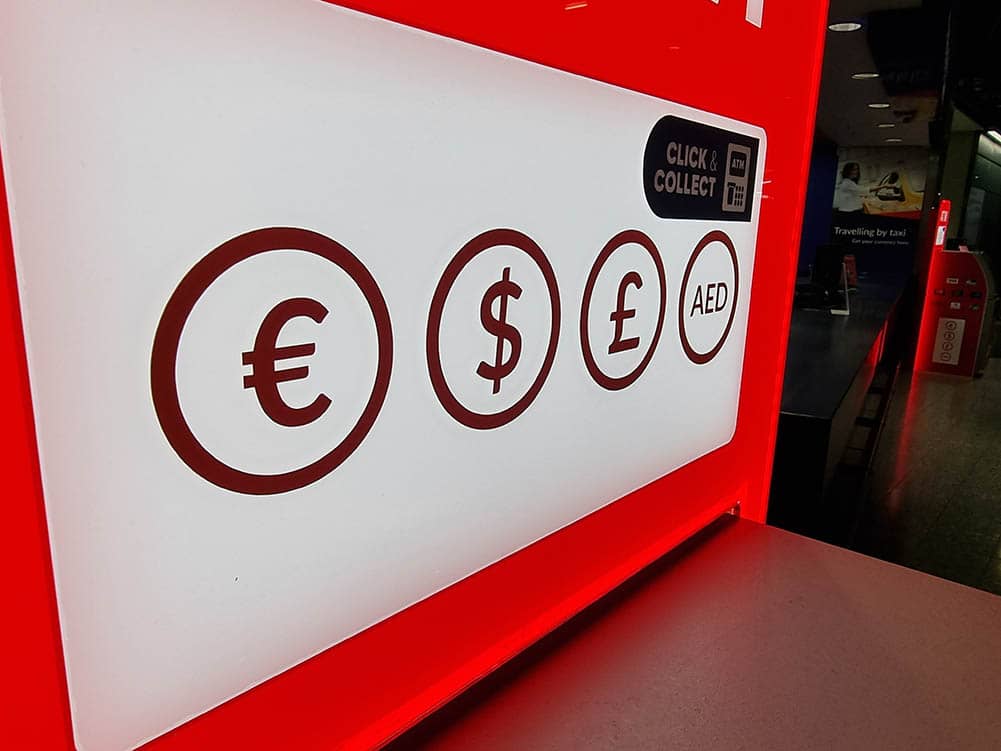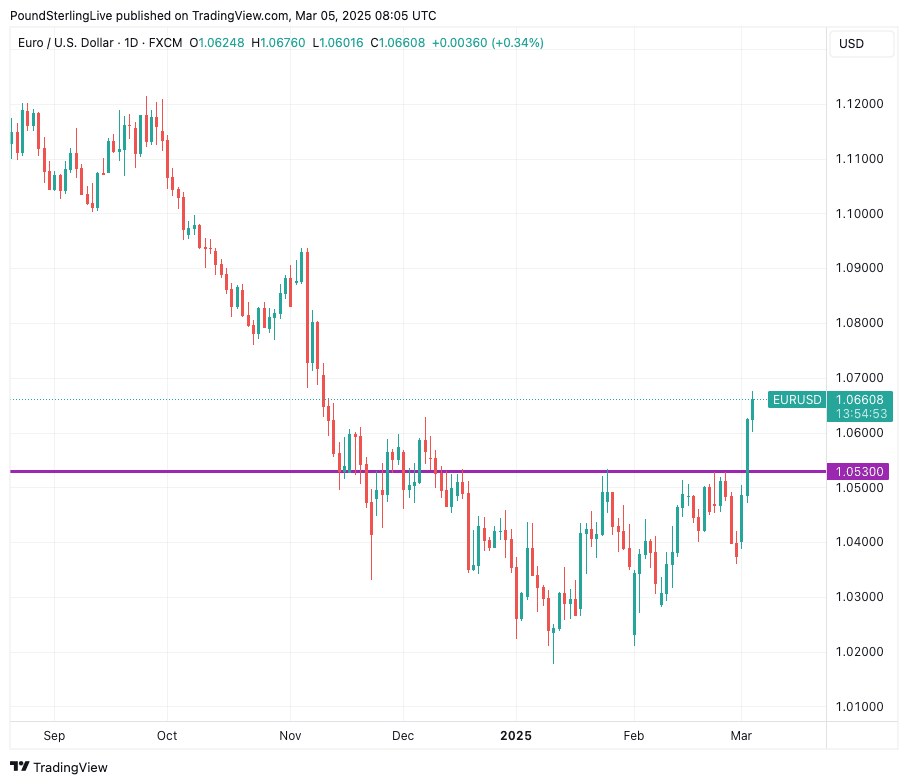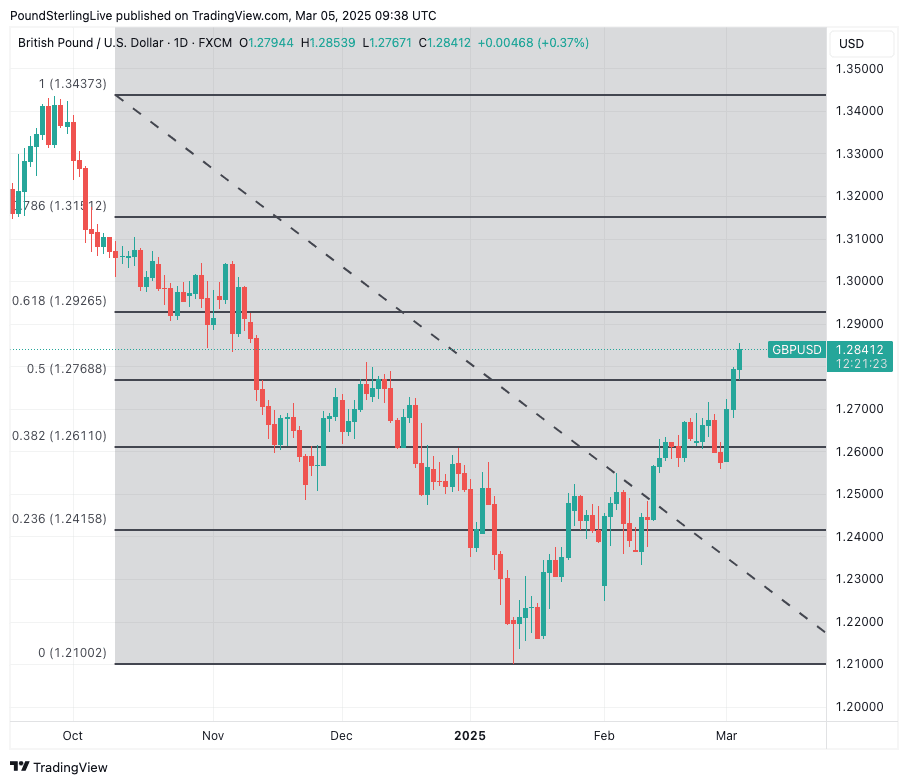
Image © Pound Sterling Live
Pound Sterling has raced to levels last seen in early November amidst a major market realignment.
This realignment sees the Dollar penalised for tariffs, whereas just last week, it was gospel that tariffs were good for the Dollar.
Another realignment is the Euro's outperformance, as investors cheer the news that Europe is finally taking generational steps to boost defence investment.
In Germany, the realignment goes further, with the government readying to alter the constitution to boost both defence and infrastructure spending, potentially flipping Europe from a net exporter of capital to a net importer.
This ex-U.S. growth impulse is a strong headwind to the Dollar as it shades the U.S. 'exceptionalism' narrative that has driven USD strength since last October.
However, it was the Dollar's slide following confirmation tariffs against Canada and Mexico would proceed that stumped traders and analysts alike.
"This reaction in USDCAD is one of the most mind-blowing things I have ever seen in thirty years of FX trading," says Brent Donnelly, analyst and founder of Spectra Markets, commenting on the fact that the Canadian Dollar joined other currencies in rallying against the USD following the news.
The USD's weakness reflects expectations that tariffs pose a major headwind to U.S. economic growth while at the same time raising inflation. In short, they are stagflationary.
The focus of Dollar weakness was against the Euro, where we saw the Euro-to-Dollar exchange rate breach a powerful wall of resistance at 1.0530.
Analysts at Morgan Stanley say this break is incredibly important as it opens the door to wider USD weakness.
"Fundamentals increasingly point to a lower DXY as the 'US exceptionalism' narrative evolves toward 'global convergence', but technicals have proven a key headwind. EUR/USD is the key, and a break above 1.0530 would be a strong signal for the DXY selloff to accelerate," says analyst David S. Adams at Morgan Stanley.
And this has proven correct. The breach of 1.0530 in EURUSD opened the door to a jump in the Pound-to-Dollar exchange rate (GBPUSD) above an interim resistance zone at 1.2730.
Now, GBPUSD has rallied to recapture the 50% Fibonacci retracement of the big October 2024-January 2025 decline.
Above: GBPUSD at daily intervals.
In short, GBPUSD's recovery is building some notable momentum.
"Having reached our initial 1.27 GBP/USD target, we revise it higher to 1.30 with a new stop of 1.2450," says Adams.
"I suppose you can argue the dollar is so overvalued that even 25% tariffs on Canada cannot push USDCAD higher. If USDCAD doesn’t go up on this, there is no reason to think EURUSD will go down on tariffs, either. Or AUDUSD. I am going long AUDUSD with a stop at 0.6054. And long EURUSD," says Donnelly.

Above: EURUSD's break above resistance is a big moment for FX.
A slowdown in U.S. economic data is becoming clear, which is leading financial markets to bet on further interest rate cuts at the Federal Reserve. Money markets show investors are pricing in 75 basis points of cuts by the December meeting.
This implies three 25bp cuts, which is up from the solitary cut expected at the start of February. This is weighing on U.S. bond yields, which in turn mechanically weighs on the Dollar.
"The latest U.S. economic data continues to suggest that Trump policies are making a notable impact on activity," says Sam Hill, Head of Market Insights at Lloyds Bank.

